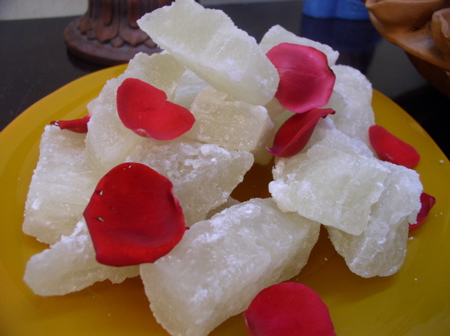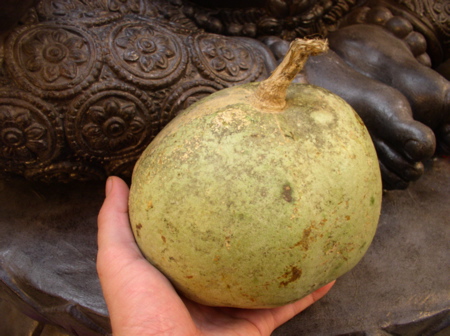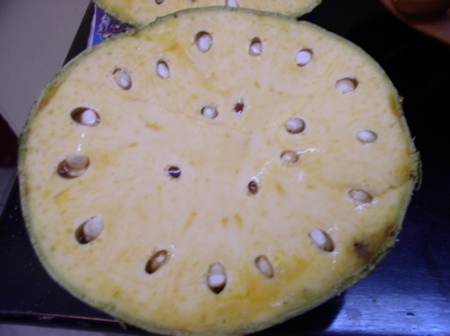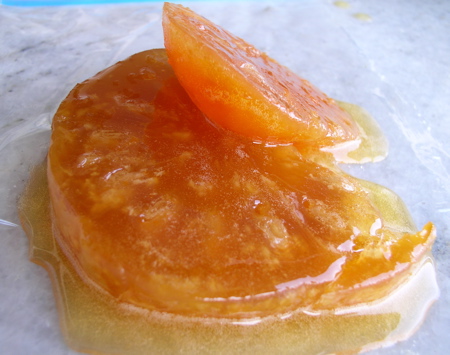I learned in Kolkata that murabbas (preserves) may be either dry or wet.
This is pedha, a dry murabba, and I think a specialty of Agra:
It’s made in steps from chunks of ash pumpkin, first treated with chuna (chemical lime) and then cured in sugar. It’s crusty on the outside, but dewy and toothsome in the middle. Just one of many, many sugary treats I tortured Sam and Laura with. Well, Sam ate his fill like me; Laura, please forgive me my torture.
I didn’t come across any other dry murabbas, though I think there may be another classic. (??)
This was the first wet one I tasted, made from amla, Indian gooseberry. Amla are just smaller than golfballs and very sour.
I have no idea how a sweet preserve like this is typically eaten. I simply tasted a couple and licked the yummy syrup from my fingers.
This is topa kool, made from a small sort of Indian plum. I think it may be from the same fruit I posted about in Mumbai, the ber. A sweet, chewy jam around a single hard seed, but with the merest hint of chilli.
These are the sorts of things sold from murky glass jars in dim markets which I normally stayed away from. But with Gautam to introduce me, I felt much less shy. I’m happy to report that I and my fellow foreign friends tasted happily.
Now here is an interesting critter:
The bel fruit. I believe Suresh has written on GourmetIndia that it can be used in drinks.
I didn’t cut off a single finger when producing this cross section:
It’s resinous.
I searched high and low for a murabba of bel in Kolkata and abandoned my search with some sorrow. A couple weeks later in a Jaipur grocery store I noticed a glass jar covered in a frothy blossom of sugar-foam speckled with a galaxy of dead ants.
“Is that bel murabba?” I asked.
“Yup,” said the shopkeeper:
What a succulent, sticky treat.






January 26, 2008 at 3:14 pm
Hi Jimmy,
I just got a free min to check in on your blog. It is looking great. I have been reading the book you gave me and love it. It was such a treat having you stay with us and bringing home endless treats. Laura and I miss you and not just for your snacks! When are you coming home to Calcutta?
love
Sam and Laura